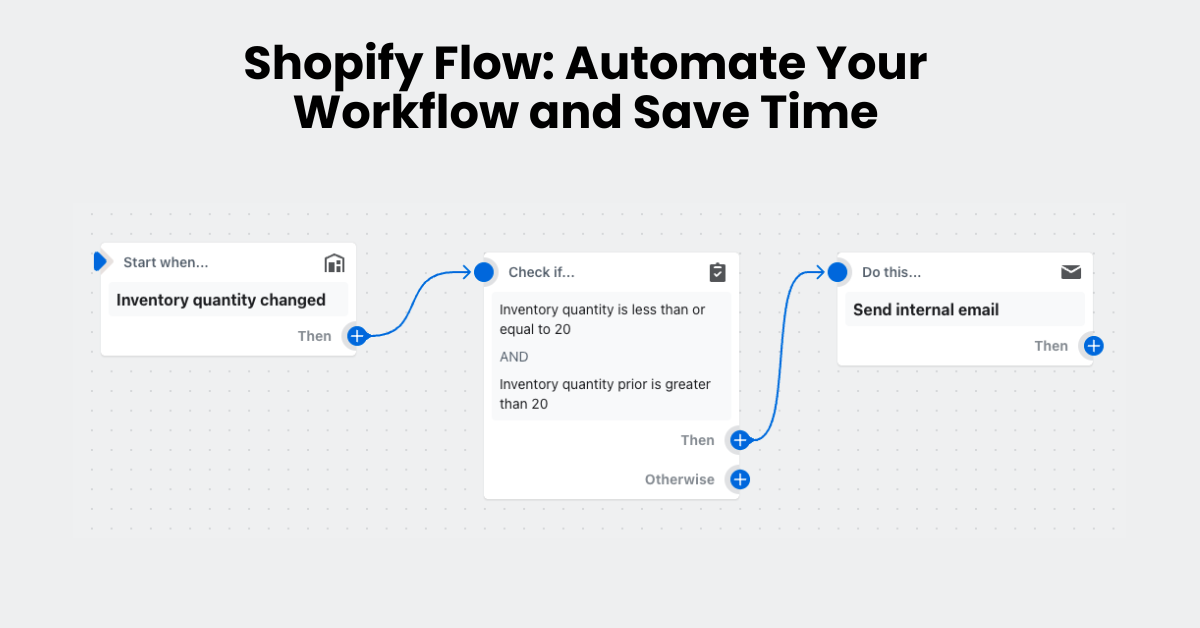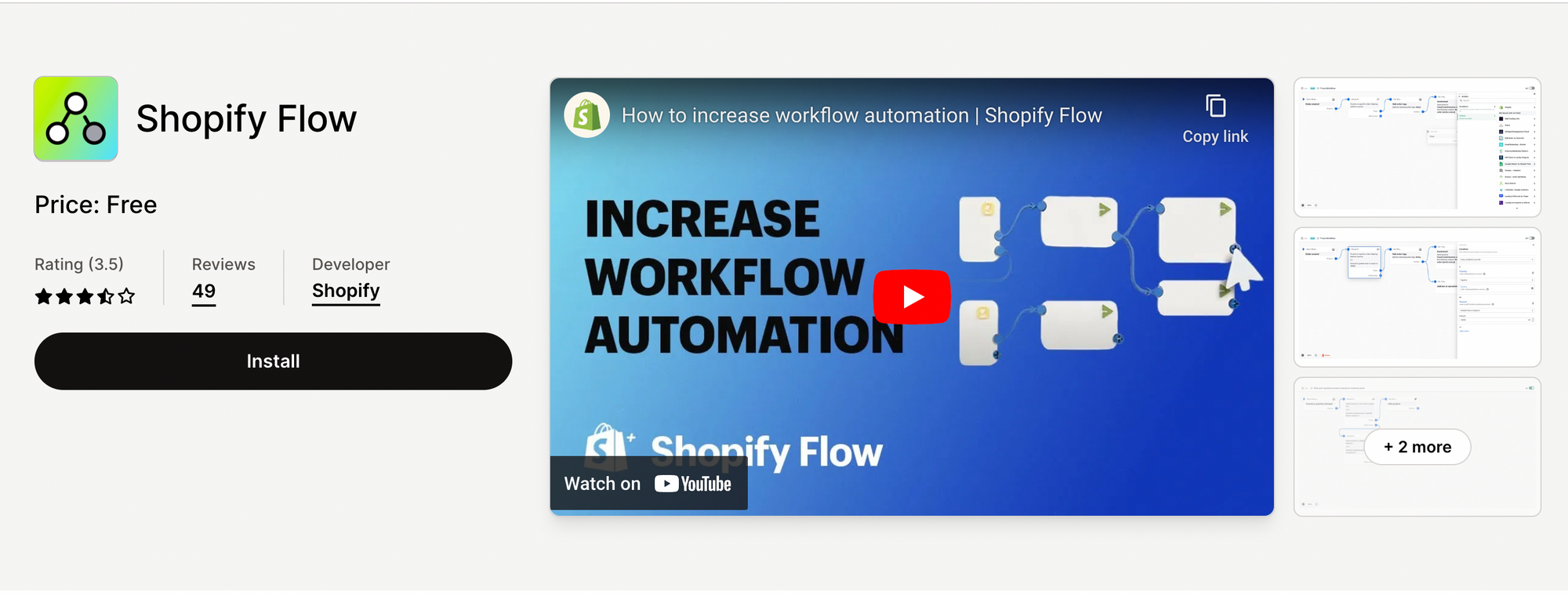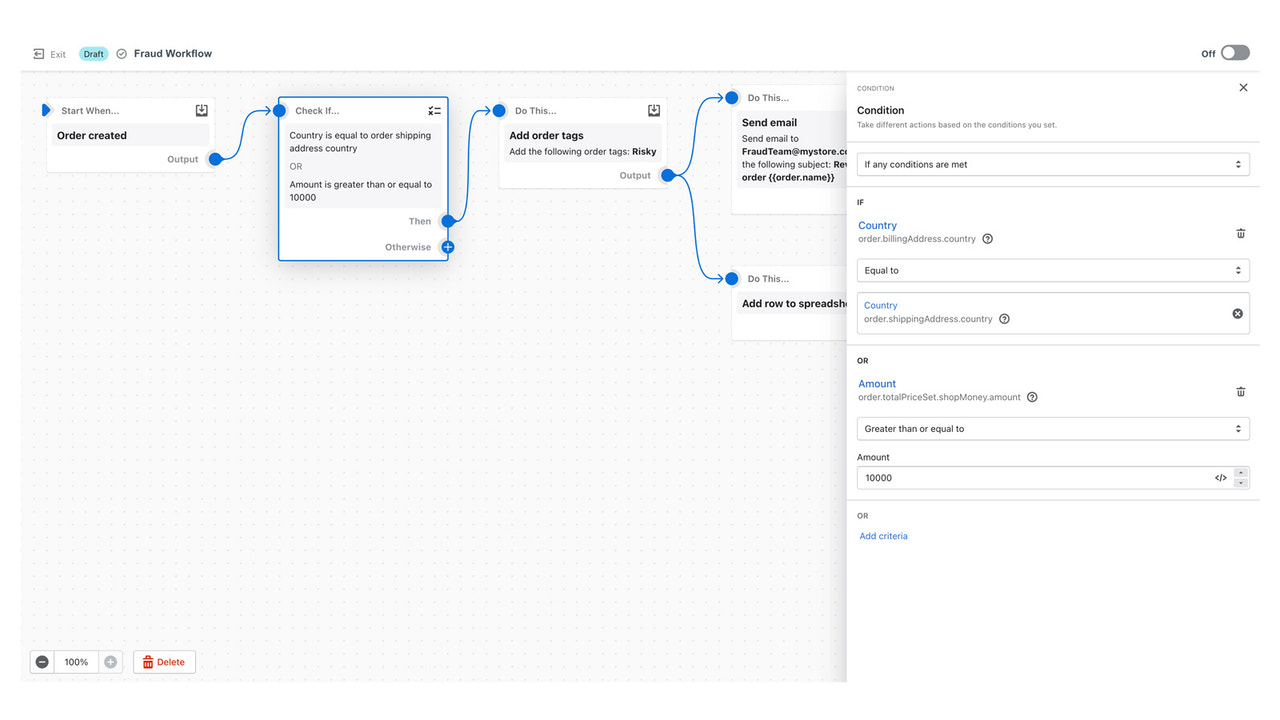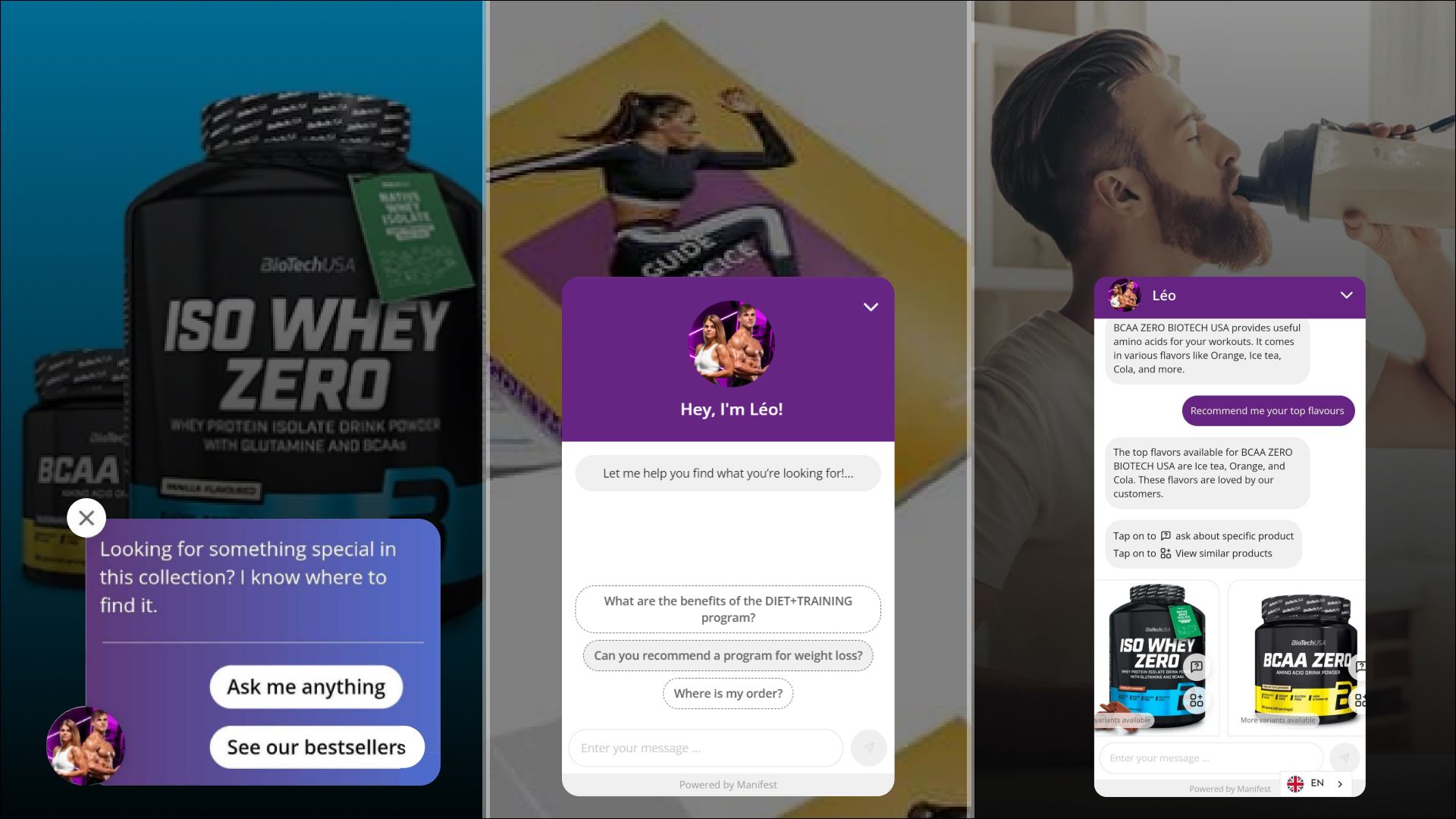Shopify Flow: Automate Your Workflow and Save Time

Imagine a world where your ecommerce business runs itself. Where orders are processed automatically, customer emails are sent out on time, and your marketing campaigns are executed flawlessly. This is the power of Shopify Flow.
Shopify Flow is a powerful automation platform that can help you automate virtually any task in your Shopify store. With Flow, you can create custom workflows that trigger actions based on events in your store, such as new orders, abandoned carts, and product reviews.
In this blog post, we'll explore how to use Shopify Flow to automate your workflow and save time. We'll cover everything from creating simple Shopify flows to integrating Flow with third-party apps.
What Is Shopify Flow?

Shopify Flow is a powerful e-commerce automation tool provided by Shopify, the popular e-commerce platform. It allows online store owners to automate repetitive tasks and processes, saving time and improving efficiency. With Shopify Flow, you can create custom workflows that trigger actions based on specific events or conditions. These automated workflows can streamline various aspects of your online store, including order processing, inventory management, marketing, and customer communication. Shopify Flow simplifies the management of your e-commerce operations, helping you focus on growing your business rather than handling routine tasks.
Why Should You Use Shopify Flow?
There are many reasons why you should use Shopify Flow to automate your ecommerce workflow. Here are a few of the most compelling benefits:
- Save time and effort: Shopify Flow can automate repetitive tasks and processes, such as sending abandoned cart emails, generating shipping labels, and updating inventory levels. This can free up your time to focus on more strategic initiatives, such as growing your business and developing new products.
- Improve your customer experience: Shopify Flow can help you to improve your customer experience by automating tasks such as sending welcome emails, order confirmation emails, and shipping notifications. You can also use Flow to automate customer support tasks, such as sending follow-up emails to customers who have contacted you with questions or concerns.
- Increase your sales and revenue: Shopify Flow can help you to increase your sales and revenue by automating marketing and sales tasks such as segmenting your customers and sending targeted email campaigns. You can also use Flow to automate tasks such as upselling and cross-selling products to customers.
- Reduce errors and inaccuracies: Shopify Flow can help you to reduce errors and inaccuracies in your ecommerce business by automating tasks that are typically prone to human error. For example, you can use Flow to automate the order fulfillment process, which can help to reduce the risk of shipping errors.
- Gain insights into your business data: Shopify Flow can help you to gain insights into your business data by collecting data from your workflows and reporting on it. This data can be used to improve your marketing campaigns, product selection, and overall business strategy.
How does Shopify Flow work?

Shopify Flow works by connecting triggers, conditions, and actions.
Triggers are events that start a workflow. They can be things that happen in your Shopify store, such as a new order being placed, a customer abandoning their cart, or a product review being submitted.
Conditions determine whether an action is taken. For example, you could create a condition that only sends an abandoned cart email if the customer has a cart value of over $50.
Actions are the tasks that are performed when the conditions are met. For example, you could create an action that sends an email to the customer, updates their inventory levels, or creates a new order.
To create a workflow in Shopify Flow, you simply need to connect triggers, conditions, and actions together. You can use the drag-and-drop interface to build your workflow, and there are no coding skills required.
Here is an simple Shopify Flow example workflow:
Trigger: A new order is placed.
Condition: The customer has a cart value of over $50.
Action: Send the customer a welcome email.
This workflow will automatically send a welcome email to new customers who have placed an order over $50.
You can also create more complex workflows that involve multiple triggers, conditions, and actions. For example, you could create a workflow that sends a customer a series of abandoned cart emails, or a workflow that automatically upsells and cross-sells products to customers.
How to Create and Manage Workflows?
To create a workflow in Shopify Flow, follow these steps:
- Go to your Shopify admin panel and click Apps.
- Click Shopify Flow.
- Click Create workflow.
- Select a trigger for your workflow. This is the event that will start your workflow.
- Add a condition to your workflow. This is optional, but it allows you to specify when the actions in your workflow should be performed.
- Add actions to your workflow. These are the tasks that will be performed when the conditions are met.
- Click Save to create your workflow.
Shopify Flow pricing
Shopify Flow is available on all Shopify plans: Basic, Shopify, Advanced, and Plus. However, there are some differences in the features and capabilities of Flow depending on your plan.

Shopify Flow Triggers
Shopify Flow triggers are events that start a workflow. They can be things that happen in your Shopify store, such as a new order being placed, a customer abandoning their cart, or a product review being submitted.
There are over 50 workflow triggers available, and they cover a wide range of events, including:
- Order: New order, order paid, order fulfilled, order refunded, order cancelled, etc.
- Customer: New customer, customer logged in, customer abandoned cart, customer placed order, customer updated account information, etc.
- Product: New product, product updated, product inventory level changed, product published, product unpublished, etc.
- Inventory: Inventory level changed, inventory replenished, inventory depleted, etc.
- Payment: Payment received, payment refunded, payment failed, etc.
- Shipping: Shipping label generated, shipment fulfilled, shipment in transit, shipment delivered, shipment returned, etc.
- Marketing: Email campaign opened, email campaign clicked, email campaign unsubscribed, etc.
- Apps: Events triggered by third-party apps.
You can use Shopify Flow triggers to automate a wide range of tasks, such as:
- Sending abandoned cart emails
- Generating shipping labels
- Updating inventory levels
- Sending order confirmation emails
- Sending product review requests
- Segmenting customers and sending targeted email campaigns
- Upselling and cross-selling products
- And much more!
Shopify Flow Examples
Here are some examples of how Shopify Flow can be used to automate common ecommerce tasks:
Abandoned cart emails
Shopify Flow can be used to automatically send abandoned cart emails to customers who have left items in their carts. This can help to recover lost sales and increase conversion rates.
Order fulfillment
Shopify Flow can be used to automate the order fulfillment process by automatically generating shipping labels, sending tracking notifications, and updating inventory levels. This can save merchants a significant amount of time and effort.
Customer communication
Shopify Flow can be used to automate customer communication tasks by automatically sending welcome emails to new customers, abandoned cart emails to customers who have left items in their carts, and order confirmation emails to customers who have placed orders. This can help to improve the customer experience.
Marketing and sales
Shopify Flow can be used to automate marketing and sales tasks by automatically segmenting customers and sending targeted email campaigns. This can help merchants to increase sales and revenue.
Automating Customer Queries and Recommendations

Manifest AI works in tandem with Shopify Flow to streamline the handling of customer queries and provide product recommendations. When a customer makes an inquiry, this intelligent chatbot can swiftly retrieve information from your store's database, assist with order tracking, and even suggest related products based on their preferences. This integration not only saves time but also contributes to a more satisfying shopping experience for your customers.
Conclusion
In the ever-evolving world of ecommerce, automation is key to success. Shopify Flow is a powerful tool that can help merchants of all sizes automate their workflows and save time. By automating repetitive tasks and processes, merchants can free up their time to focus on more strategic initiatives, such as growing their business and developing new products.

.png)
